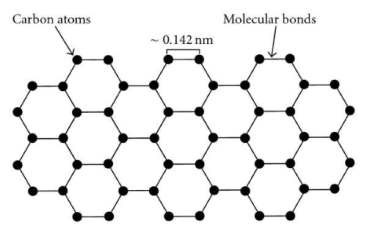How Will Graphene Revolutionize The 21st Century?
In the continually developing domain of science and technology, discoveries once considered unlikely now form the basis of modern research. Graphene, a material whose origins can be traced back to theoretical discussions in the 1940s, occupies a prominent role in recent advancements. Due to its two‐dimensional atomic structure – only one atom thick – graphene was initially met with scepticism. Subsequent experiments have confirmed its existence and demonstrated that it conducts heat and electricity more efficiently than any known material. Graphene has been examined through rigorous experimentation. The two‐dimensional structure remains its defining characteristic.

Discovery and Properties of Graphene
Graphene was first isolated in 2004 by researchers at the University of Manchester using mechanical exfoliation. This study confirmed that graphene is a stable two‐dimensional material with a lattice of carbon atoms arranged in a hexagonal pattern. The team was awarded the Nobel Prize in Physics in 2010 for their discovery. Graphene is approximately 200 times stronger than steel. It conducts electricity more efficiently than copper. It also exhibits a high rate of thermal conductivity and displays flexibility and transparency.
The material’s intrinsic properties make it of interest in various technical studies and applications.
Graphene in Electronics: Fostering Innovation
Graphene offers advantages for the electronics industry. Given the ongoing miniaturisation of electronic devices, it is being considered for use in developing thinner and more energy‐efficient components. Its electrical conductivity and strength, combined with flexibility, meet current industry requirements.
Applications of Graphene in Technology
Flexible Touchscreens: Consider smartphones and tablets that are lighter and thinner. They may also be flexible enough to be rolled or folded, thereby increasing portability. Graphene’s flexibility and strength, along with its electrical conductivity, enable such applications. These devices may change how users interact with technology and integrate digital interfaces within everyday environments.

Conductive Plastics: Combining graphene with plastics forms conductive composites. Imparting electrical conductivity to plastics could improve products used in lightweight aircraft, fuel‐efficient automobiles, and construction. For instance, lighter aircraft, more economical cars and advanced building materials may result.
Electrochemical Developments: Graphene is used as an electrode in batteries and supercapacitors. Its application may improve capacity, charging and discharging rates, and longevity. These improvements may yield electric vehicles with increased range and shorter charging times, as well as more effective renewable energy storage systems.
The Future Influenced by Graphene
Graphene has potential across a range of sectors. In healthcare, it may be utilised in drug delivery and medical diagnostics. In the energy sector, graphene could enhance solar cell efficiency and energy storage capabilities. Its use in conjunction with existing materials may contribute to further developments in materials science and technology.
Challenges and Research Directions
Despite its potential, integrating graphene into daily applications faces challenges. Scaling up the production of high‐quality graphene remains technically complex and cost‐intensive. Incorporating graphene into established manufacturing processes requires novel techniques and improved understanding of its interactions with other materials. Addressing these issues necessitates sustained research efforts, interdisciplinary collaboration and significant investment. These measures will help realise the potential of graphene in an economically viable and environmentally sustainable manner.
Ethical Considerations and Sustainability
Graphene development raises important ethical and sustainability concerns. Large‐scale production may have environmental impacts that require thorough assessment. Potential health risks associated with exposure to nanomaterials must be carefully evaluated. Equitable access to graphene‐based technologies is also a critical issue. It is essential that the benefits of graphene are harnessed responsibly so as not to compromise the welfare of future generations.
Conclusion
Graphene is positioned to significantly affect 21st century technology. It offers opportunities to develop flexible electronics and materials that combine strength with functionality. Overcoming challenges such as scaling production and addressing ethical issues is necessary. Ongoing research and collaboration with institutions such as Stanford Advanced Materials are vital. Such cooperation between research communities and providers like Stanford Advanced Materials is essential to convert graphene’s potential into practical applications. This progress may contribute to a new phase in materials science and technology.

 Bars
Bars
 Beads & Spheres
Beads & Spheres
 Bolts & Nuts
Bolts & Nuts
 Crucibles
Crucibles
 Discs
Discs
 Fibers & Fabrics
Fibers & Fabrics
 Films
Films
 Flake
Flake
 Foams
Foams
 Foil
Foil
 Granules
Granules
 Honeycombs
Honeycombs
 Ink
Ink
 Laminate
Laminate
 Lumps
Lumps
 Meshes
Meshes
 Metallised Film
Metallised Film
 Plate
Plate
 Powders
Powders
 Rod
Rod
 Sheets
Sheets
 Single Crystals
Single Crystals
 Sputtering Target
Sputtering Target
 Tubes
Tubes
 Washer
Washer
 Wires
Wires
 Converters & Calculators
Converters & Calculators
 Write for Us
Write for Us
 Chin Trento
Chin Trento



